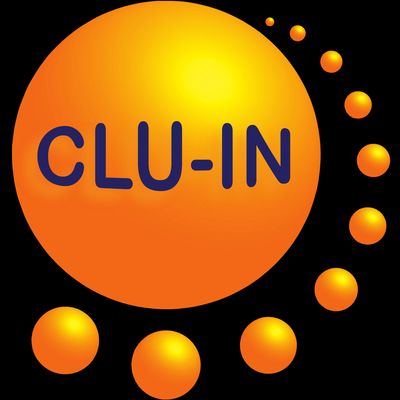Since 1998, The Contaminated Site Clean-Up Information (CLU-IN) website has presented Internet Seminars covering a wide variety of technical topics related to hazardous waste characterization, monitoring, and remediation. For select seminar topics offered since 2012, we are making complete video recordings available through our archives. This feed contains all video seminars archived in the last 12 months. For a complete list of seminars archived since 2000, please visit http://www.clu-in.org/live/archive/. Our Rehabilitation Act Notice for reasonable accommodation is available at http://www.clu-in.org/training/accommodation.cfm. CLU-IN was developed by the U.S. Environmental Protection Agency (EPA) but is intended as a forum for all waste remediation stakeholders. For more information and to view upcoming live offerings, please visit http://www.clu-in.org/live/. For a complete list of RSS feeds available on CLU-IN, please visit http://www.clu-in.org/rss/about/.
http://www.clu-in.org/live/archive
Gesamtlänge aller Episoden: 13 days 3 hours 21 minutes
2018 BUILD Act & the EPA Brownfields Program (Jun 6, 2018)
The Brownfields Utilization, Investment, and Local Development Act (BUILD Act) was enacted as part of the FY18 Omnibus Appropriations Act. The BUILD Act amends the 2002 Brownfields Amendments to CERCLA and authorizes changes to EPA's Brownfields program. Members from EPA's Brownfields and Land Revitalization Program will provide an overview of how the BUILD Act changes some aspects of EPA?s brownfields grants, ownership and liability requirements, and State & Tribal Response Programs...
New Approaches and Alternatives for Toxicity Testing: Session III - Modernizing Safety Testing (May 31, 2018)
The NIEHS Superfund Research Program (SRP) is hosting a Risk eLearning webinar series highlighting research that may be useful as new approaches and methodologies for evaluating the safety of chemicals. In the third session, presenters will discuss new and emerging strategies for chemical safety evaluation...
OBLR RE-Development Academy Webinar #2: Real Estate Market Analysis (May 30, 2018)
If you build it, they might not come. If you dream it, a developer may not be interested. This webinar will cover the basics of real estate market analysis and what drives development. Whether it?s a commercial, residential, or industrial development, developers have specific criteria they are looking for. Participants will learn the difference between types of developers, basic criteria to use when evaluating development teams, and what developers look for in real estate deals...
New Approaches and Alternatives for Toxicity Testing: Session II - Tools for Assessing Exposure and Toxicity (May 23, 2018)
The NIEHS Superfund Research Program (SRP) is hosting a Risk eLearning webinar series highlighting research that may be useful as new approaches and methodologies for evaluating the safety of chemicals. Assessing environmental exposure and identifying health hazards are both important aspects of chemical safety evaluation, and rapid screening tools may be used to improve our understanding of both aspects...
Connecting the Science to Managing LNAPL Sites a 3 Part Series - Part 3 (May 22, 2018)
Connecting the Science to Managing LNAPL Sites ? 3-Part Series The newly updated LNAPLs (Light Non-Aqueous Phase Liquids) 3-part training course series is based on the ITRC guidance: LNAPL Site Management: LCSM Evolution, Decision Process, and Remedial Technologies (LNAPL-3, 2018) and focuses on connecting the science to managing LNAPL sites and helping you: Build upon your Understanding of LNAPL Behavior in the Subsurface (Part 1) Develop your LNAPL Conceptual Site Model and LNAPL Remedial...
Combined Remedies: Adaptive, Flexible, Attentive Use of the Right Tools (May 21, 2018)
Combining remedies is becoming increasingly prevalent across the spectrum of hazardous waste sites from relatively simple to more complex. This trend is driven by 1) a larger remedial tool box; and 2) by increased understanding that contamination occurs in different phases and concentrations, and in different subsurface compartments. Combining remedies is only part of the story...
Connecting the Science to Managing LNAPL Sites a 3 Part Series - Part 2 (May 15, 2018)
Connecting the Science to Managing LNAPL Sites ? 3-Part Series The newly updated LNAPLs (Light Non-Aqueous Phase Liquids) 3-part training course series is based on the ITRC guidance: LNAPL Site Management: LCSM Evolution, Decision Process, and Remedial Technologies (LNAPL-3, 2018) and focuses on connecting the science to managing LNAPL sites and helping you: Build upon your Understanding of LNAPL Behavior in the Subsurface (Part 1) Develop your LNAPL Conceptual Site Model and LNAPL Remedial...
New Approaches and Alternatives for Toxicity Testing: Session I - Toxicity Testing Strategies and Model Systems (May 14, 2018)
The NIEHS Superfund Research Program (SRP) is hosting a Risk eLearning webinar series highlighting research that may be useful as new approaches and methodologies for evaluating the safety of chemicals. This series coincides with recent initiatives found in the U.S. Environmental Protection Agency New Draft Strategic Plan and the National Toxicology Program (NTP) Strategic Roadmap...
Connecting the Science to Managing LNAPL Sites a 3 Part Series - Part 1 (May 8, 2018)
Connecting the Science to Managing LNAPL Sites ? 3-Part Series The newly updated LNAPLs (Light Non-Aqueous Phase Liquids) 3-part training course series is based on the ITRC guidance: LNAPL Site Management: LCSM Evolution, Decision Process, and Remedial Technologies (LNAPL-3, 2018) and focuses on connecting the science to managing LNAPL sites and helping you: Build upon your Understanding of LNAPL Behavior in the Subsurface (Part 1) Develop your LNAPL Conceptual Site Model and LNAPL Remedial...
Bioavailability of Contaminants in Soil: Considerations for Human Health Risk Assessment (May 3, 2018)
Risk-based cleanup goals are often calculated assuming that chemicals present in soil are absorbed by humans as efficiently as the chemicals dosed during the toxicity tests used to determine regulatory toxicity values (such as the Reference Dose or Cancer Slope Factor)...
